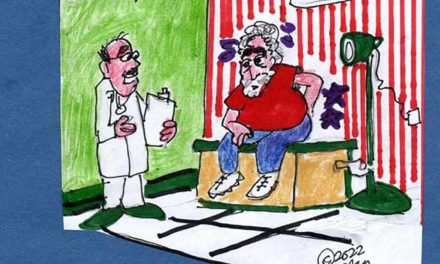Is the Handshake Now Part of Our Cancel Culture?
And what would Lt. Columbo just consider this “one more thing?”
By Ed Goldman
Binge-watching some episodes of TV’s “Columbo” recently, I was struck by something the great Peter Falk did repeatedly, as the eponymous LAPD lieutenant. He shook the hand of almost everyone he met—including the special guest murderer he was closing in on.
If you recall the series, the murderer was revealed at the outset of each episode and we then spent 60, 90 or 120 minutes (the show’s length varied season to season) watching Columbo circle and befuddle the perp. As Falk said in his charming autobiography, Columbo’s technique made the suspects feel as though they were being “nibbled to death by ducks.”
“Just one more handshake, sir?”
Watching the shows again, I realized I picked up two techniques from Columbo: how to disarm a reluctant interviewee (in my case, always figuratively, though there was rarely any gunplay on the show, either) and, more to the point, how calming a handshake can be for both parties.
That changed with the coronavirus pandemic this year, and I certainly understand why. But elbow bumping will never replace the warmth and reassurance of a firm handshake.
“Firm” is a key word here. My late wife Jane taught me the importance of that. When I first met her in 1977, she was a TV news reporter covering an event I’d set up for Sacramento City Hall in my role as its public information officer. I went to shake her hand, very gently, thinking this was appropriate when you outweighed someone (by at least 80 pounds at the time), and she playfully slapped my hand away, saying, “If you want to hand me a fish, go get a fish. Otherwise, shake my hand.” She might as well have added, “like a real man, you sissy boy.”
So I tried again, keeping my deflated ego in check, and didn’t attempt to manipulate her knuckles, as guys often do when forced to shake hands with someone on whom they’re trying to get the (forgive me for this) upper hand.
Thereafter, I developed a handshake for women that was only a slightly modified version of the one I proffered to men: no less earnest but perhaps a tad less resolute. I was always surprised when meeting businesswomen in particular how aggressive their handshakes could be: no knuckle manipulation but nothing remotely docile. From my standpoint, the world of male/female interaction—at least as exemplified by handshakes—was changing for the better.
When COVID-19 dictated that the handshake was a bad idea, I was surprised to see some commentators write that it was a primitive custom anyway. “Who shakes hands anymore, anyway?” said one of my favorite talk-show hosts, laughing at the very idea of the tradition—and, if I recall, equating it with a man hat-tipping (upon meeting a woman) and door-opening (for a woman). The talk-show host didn’t come right out and declare that chivalry was dead, which was good, since I had a hard time picturing that for this guy, it had ever been fully alive.
Handshakes supposedly started out as a way for each party to discern whether the other was armed. Since this was in Greece, possibly as long ago as 500 B.C., the tiny and easy-to-conceal derringer had yet to be invented. So how these guys thought they could hide in their hands spears, pikes or even a xipho (which Wikipedia, the frequently correct website, defines as “a double-edged, one-handed Iron Age straight shortsword”) is beyond me. Maybe the ancient Greeks had enormous hands.
It should also be noted that not every country misses the handshake since it never allowed it. “In some Asian countries, a hard handshake is considered rude. In Vietnam, you should only shake hands with someone who’s your equal in age or rank. In Thailand, instead of shaking hands, you’re more likely to bow with your hands together and up to your chest,” reports the above-referenced Wikipedia.
Ed Goldman's column appears almost every Monday, Wednesday and Friday. A former daily columnist for the Sacramento Business Journal, as well as monthly columnist for Sacramento Magazine and Comstock’s Business Magazine, he’s the author of five books, two plays and one musical (so far).














